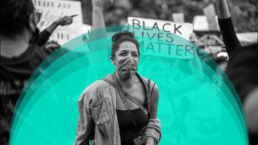Stephanie Luce, Democratic Left
In the summer of 2020, in the midst of the uprisings against police brutality, a number of unions issued statements declaring their support for racial justice. But real transformation must go beyond resolutions. Unions have much work to do, from examining their own internal practices and leadership to fighting for their members. The Madison, Wisconsin, teachers union (MTI) offers a good example of a union taking a deep approach to revitalization centered on racial and social justice.
In 2011, Governor Scott Walker of Wisconsin implemented massive restrictions on public-sector unions, gutting collective bargaining through Act 10 and making it difficult for public-sector unions to exist at all. Teachers unions already faced the challenge of high turnover. Nationally, 7% to 10% of teachers leave the profession each year, and rates are even higher among teachers of color.
With inspiration from its sister union in Milwaukee, the MTI recentered its mission both to focus on social and racial justice and to highlight that it had a responsibility to uphold an accessible, equitable, and public education system. And in doing so, it also hoped to retain more teachers. It focused its Collaboration to Ensure New Teacher Retention and Success (CENTRS) program to focus on “professional development opportunities to strengthen teachers’ abilities to deliver instruction through a racially equitable lens.”
Kerry Motoviloff, the Project Lead at MTI CENTRS, says that many new teachers come into the profession with a commitment to social and racial justice but soon encounter work requirements and an educational system that does not align with their beliefs. Part of the work of the CENTRS program is to give these teachers the support they need to refocus on their belief system.
There are over 3,000 educational staff in the Madison Metropolitan School District. Despite Act 10, which decimated the membership of some other Wisconsin unions, more than 2,700 people belong to MTI, an astonishingly high number for a voluntary union that has diminished power to bargain over wages.

Transforming the union and building community
In addition to its deep educational work with its members, MTI has collaborated with Labor Notes, a media and organizing project that promotes activism, to offer workshops to members focused on the history of labor unions and race, on grounding anti-racist work in the context of union democracy, and on supporting anti-racist practices within the union and schools.
For example, the MTI recently established 60 new elected positions that included faculty representatives for equity and diversity for each school. Those who have been elected are working to guarantee representation for people of color on every committee in the union.
The MTI began its social and racial justice work by looking for community partners that were already doing it. It collaborates with other organizations in the area, inviting representatives to speak at workshops or partnering for actions.
Union members also work to center student needs. For example, the union asked the Madison school district to provide support for students who had experienced trauma due to the pandemic. With the rise in anti-Asian violence, the union consulted with student leaders of the United Asian Club to develop ideas for action and publicized those ideas.
Challenges remain
The work is not easy and there is a lot still to do, says Motoviloff. Nationally, the teaching profession is disproportionately white, and while the numbers have been changing, progress is slow, particularly compared to the fact that the student body is becoming more diverse. The Madison school district has been doing purposeful recruitment and hiring more teachers of color, but the teachers are not sticking around.
For Motoviloff, and many others in teachers’ unions, the only way to fight the larger negative trends in education and in labor is to build up a base of rank-and-file teacher leaders. The national union supports such efforts through a slight dues increase that allows it to give grants to local unions to pay for workshops and programs.
With the recent right-wing attacks on “critical race theory,” the Madison teachers offer an excellent example of how integrating a deep racial justice analysis into the school curriculum improves education for all students and creates better working conditions for teachers.
Teachers have expressed their appreciation for the impact the union training has had on their work. One teacher noted that the program helped illustrate “how I can decolonize my curriculum to share power with rather than power on my students.” Added another teacher, “I feel like I have a better idea of what being an abolitionist teacher means. It is creating a home place for my students of color. It is speaking up against racist curriculum and systems within our schools.”
Recent Posts
Stop Israel’s Dystopian “Humanitarian City” Plan—Before It’s Too Late
July 11, 2025
Take Action Now For the past 20 months, the world has watched—and largely enabled—a genocidal campaign in Gaza. Over 55,000 Palestinians have been…
The “Liberal” International Order Is Criminalizing Palestine Protests
July 11, 2025
Take Action Now As Western governments repress Palestine solidarity and enable Israel’s impunity, the “liberal international order” is no longer…
Politicians Are Betraying Gen Z On Climate
July 10, 2025
Take Action Now While Gen-Zers thrift, knit, crochet, and find other ways to reduce our footprints, Trump and the GOP are greenlighting more climate…
Trump’s Deportation Threat Against Zohran Mamdani Is Shameful
July 10, 2025
Take Action Now In only half a year of Donald Trump’s presidency, he and his allies have turned deportation into an explicitly political threat…




